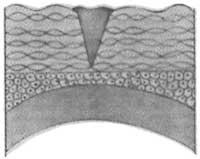Accessories
This disease has had many denominations in Basque, becoming aware of the dialects and parts of the body it touches. We will use as a general name the word OSPEL and to name those corresponding to the fingers HAZI.

There are many who, after having been in contact with the cold, after a long time outdoors, feel a lot of cold in their hands, itching in their nose and ears and a kind of tingling in their legs. At first this reaction can be understood as a defense mechanism that the body sets in motion against the cold.
What are they?
Flushing of hairy skin.
They appear in times of cold, especially in children and sore. When genital function starts (and with it the peripheral circulation works entirely), it usually disappears.
However, there are people who have a special predisposition to suffer this pathological situation:
- Lymphatic women (without much energy, apathetic)
- Adrenal or ovarian insufficiency: this is why the critical ages of women (puberty or menopause) are frequent.
Bad women with menstruation
Recent studies have clearly shown that insufficient nutrition has to do with the formation of ospels (insufficient supply of phosphorus, calcium or vitamins).
In circulation stasis or stasis occurs. And as a result of this appears erythema or reddish: the skin acquires a special shine, hardens and cools.
In a second phase vesicles and blisters appear.
If heated, the red color increases and the sensation of initial hardness becomes itching and hard itching.
In some cases cracks (grooves) and ulcers can occur in the shadows. If cracks are exploited, ulcers can become infected, causing pus and punctures or scabs.
The damage caused by this disease in its day was far superior to the current ones. What factors or causes might be involved?
- Food has changed a lot, in good sense.
- Nowadays the houses have better heating systems.
Therefore, the great deformations that could be observed in the past (especially in the ears), today are not seen.
If the hats are pecked they are pale, and this pallor is kept more in normal people.
Treatment
Local treatment and general measures.
- Prepare a hot water bath and add oak and walnut bark to the water: 5 liters of water and 50 g per crust. Put the hats in the water and stay as long as possible. Dry well and then rub well with camphor alcohol. For parts
- Massage with mild oil (to speed up traffic).
of the body that cannot enter the water (nose, ears) a blanket or plaster based plaster and hot water will be placed on the teasing, keeping it for half an hour. Ointments
and ointments based on sulfamide or antibiotics will be used in case of shade infection or ulcers.
15 seconds in cold water and 15 seconds in hot water. Repeat this alternation about twelve times.
Powders or ointments.
Among the general measures
- Avoid the cold (and especially outdoors, for a long time, without adequate protection measures).
Treatments for anemia, lymphatic states, and hormonal deficiencies. But especially those made with hormones and vitamins. Always, as not, under the orders of the doctor.
Active and passive movements in the limbs (gymnastics).
Dry your hands and feet well after each bath.
Then the talcum powder is added. In summer it hardens and tries to tone the skin with cold water baths and igutzikis (sea water is very appropriate).
There are special soaps, such as sweet almond oil and soda.





